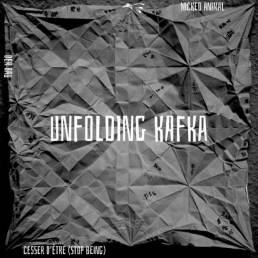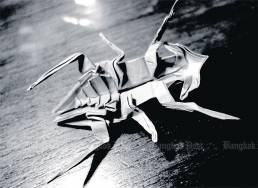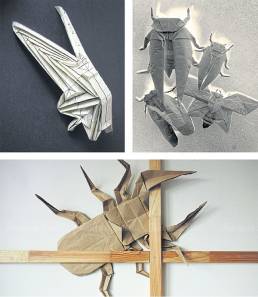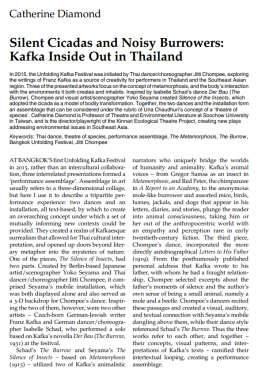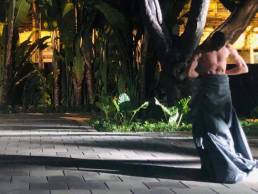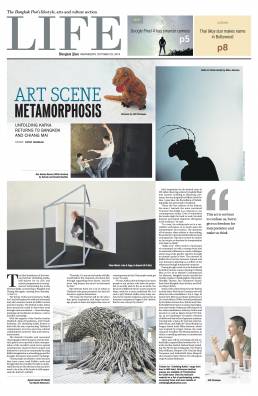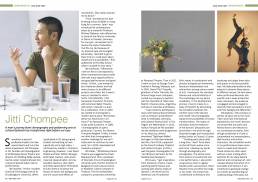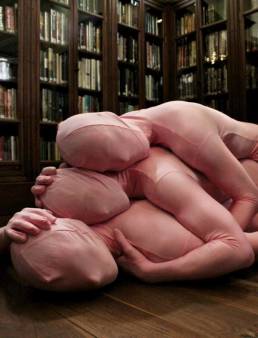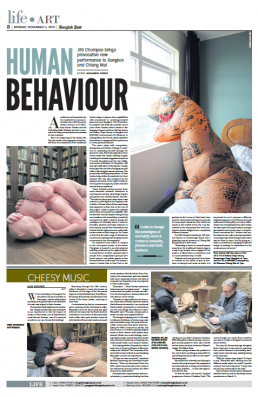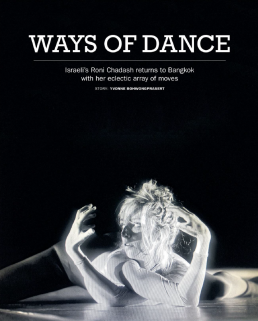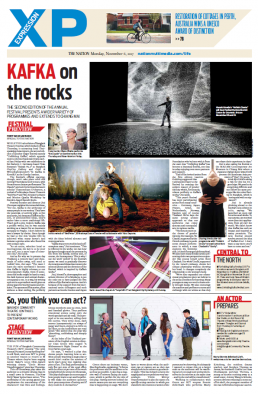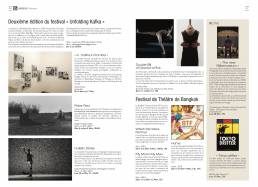Bangkok Post : 13 November 2015
96 Cicadas
‘They come out, they cry and then they die’
WRITER: MIKA APICHATSAKOL
Five contemporary performance artists will take on Franz Kafka’s most influential works in an exciting crossroads of style and storytelling, during the Unfolding Kafka Festival. Guru speaks with one of the artists, Berlin-based Yoko Seyama, whose piece based on Kafka’s Der Bau (The Burrow) is currently showing.

Yoko Seyama. — Photos courtesy of Yoko Seyama
What kind of art do you create?
I call myself a multimedia artist. Sometimes I use computers, programmes or projections, but I also work with raw materials like paper or leaves. Scenography or space installations best covers what I do.
What are you doing for the Unfolding Kafka Festival?
A space installation with kinetic sculptures — hanging mobiles. It’s going to be 96 origami cicadas. I’m using a special washi paper from Japan, made of kozo [paper mulberry]. This is important, because this paper gets softer and softer as you fold, but doesn’t break. Also, the size of the paper is larger than 1m². Thai-nichi University’s origami club is helping me out with making the cicadas, because it’s so hard to make just one. I’m using many different origami techniques … one involves more than 200 folds.
Why did you choose to approach the theme in this way?
I chose origami for the obvious reasons: the project is called “Unfolding” and my Japanese roots. But I really like the idea that a flat square can become a 3D sculpture, and when you unfold it, it becomes flat again. And I also like how once you unfold it, you have all the folded lines as scars of the time process.
Why cicadas?
I think cicadas are really poetic insects. They live underground for years and years — some for 17 years — then one day they come out, they cry and then they die. I don’t think cicadas, when they’re underground, pity their situation. It’s just the patience of animals to live underground like that, and I somehow imagined Kafka being like this when he was making his creations, writing in his room.
How can Kafka noobs enjoy this exhibition?
For me, it’s not very important whether people understand Kafka, but if they develop some kind of attachment through the piece. If you can see or feel something different from normal life, I’m happy.
